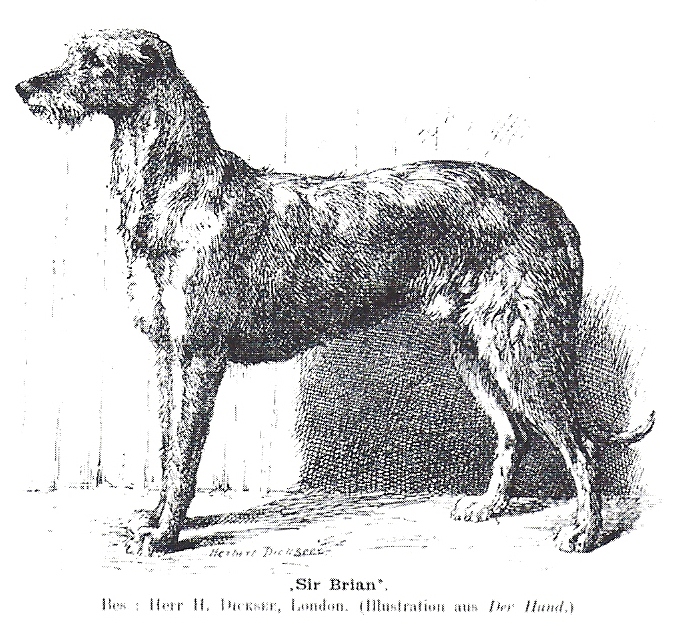 Them Bones
Them Bones
Them Bones: Orthopedic Issues in Young, Large and giant Breed Dogs
By Nancy Kay D. V. M maintaining the company of a "Clifford" creates a unique feeling of companionship. Walking beside a giant dog, one feels almost regal. And, not having to bend over to stroke your best Buddy's head is a nice perk. If you adopt a large or giant breed puppy such as a German Shepherd, Great Dane, Wolfhound, or Newfoundland, to name a few, be aware that your youngster's rapidly growing (lengthening) legs are prone to orthopaedic issues. Some of these "growing pains" are mild and transient, but others require intervention. The critical time period during which these issues arise is during the first 12 to 18 months of life when the bones are lengtheningest most rapidly. By The one year mark, growth plates start to close and bone development slows down considerably. The most common orthopaedic issues in young large and wide dogs are osteochondrosis (osteochondritis dissecans), Panosteitis, and hypertrophic osteodystrophy. All three like to affect more than one limb, resulting in a "shifting leg lameness"-the puppy favours the leg that happens to hurt the most on any given day. Osteochondrosis Osteochondrosis, also known as Osteochondritis Dissecans (OCD), disrupts the development of normal cartilage. Normal joints develop a smooth layer of cartilage that protects the underlying bone. In dogs with osteochondrosis, the cartilage fails to develop normally. The unhealthy cartilage can develop cracks or flaps result in inflammation within the joint. (It is at this point that osteochondrosis officially becomes osteochondritis Dissecans.) In some cases, the flap detaches from the cartilage surface and becomes a free floating "joint mouse". The end result is a painful joint causing lameness. Shoulder joints are most common affected, but osteochondrosis can also occur in elbows, knees (stifles), hips, and ankles (hall). An X-ray is usually all that is needed to diagnose osteochondrosis. Some dogs respond to rest, diet modification (see below) and anti-inflammatory medications. For Others, surgery is needed to remove the "mouse" along with any remaining defective cartilage. Panosteitis the thin layer of cells along the outer surface of the legs ' long bones is called periosteum. Panosteitis refers to inflammation of this tissue. It is suspected when a large or giant breed young star develops lameness and reacts painfully when the affected bone is squeezed a bit. In severe cases, panosteitis causes a fever and lethargy. The diagnosis may be confirmed with X-rays. Most dogs respond favourably to rest, diet modification (see below), and anti-inflammatory medications. Episodes can last for two to three weeks, or can continue for months at a time. Hypertrophic osteodystrophy (HOD) Growth plates are the sites from which bones elongate. Once The growth plates close, bone lengthening ends. Inflammation within open growth plates is referred to as HOD, and it causes swelling and pain in multiple joints. HOD may be associated with a fever and loss of appetite. The diagnosis is confirmed with X-rays. Treatment consists of rest, diet modification (see below), and anti-inflammatory medications. Just as with Panosteitis, most dogs with HOD improve over time with no permanent damage. Severe damage to the growth plate is rare, but can result in abnormal bone growth and a deformed appearance of the affected legs (angular limb deformity). The role of nutrition There is clear evidence that nutrition plays a role in the development of developmental orthopaedic diseases in large and giant breed dogs. High Energy Diets (puppy or performance formulations) and excess calcium intake have been implicated. These nutritional factors, in conjunction with rapid growth, set the stage for developmental bony abnormalities. While It's tempting to grow a large or giant-wide of dog as big as possible as fast as possible, it is important to allow them to achieve their final height naturally and gradually. Pushing the process with over-nutrition or over-supplementation does more harm than good. The dietary changes typically recommended for puppies with orthopaedic issues include:
- Downgrade from a "high octane diet" to one that promotes slower growth. This usually involves transitioning from a puppy food to an adult formulation.
- Feed a premium diet that is specifically formulated for large-breed puppies. These are designed to avoid excess calories while providing appropriate levels of calcium, phosphorus, and vitamin D.
- Avoid a pudgy puppy. Make sure the young star maintains a lean body weight.
- Modify or eliminate vitamin/mineral supplementation. A High quality Diet provides all of the vitamins and minerals needed for normal growth and development.
- If feeding a homemade diet, work with a veterinary nutritionist to ensure the food is balanced for normal orthopaedic development.
- Joint health supplements such as glucosamine have no proven benefit in terms of preventing or treating these orthopaedic diseases. Much like the proverbial chicken soup, however, "It couldn't hurt".
The role of genetics the high occurrence of these developmental diseases within certain breeds and bloodlines certainly speaks to a probable underlying genetic cause. The fact that male dogs are more commonly affected also raises suspicion. Before adopting a large or giant breed puppy, ask the breeder about the incidence of osteochondrosis, Panosteitis, and OCD within the Pup's Dam, sire, grandparents, aunt's and uncles. Ideally, dogs who have experienced osteochondrosis, panosteitis, and/or HOD should not be used for breeding. Has your dog experienced one of these diseases? If So, how did you manage it? Nancy Kay D.V.M.
